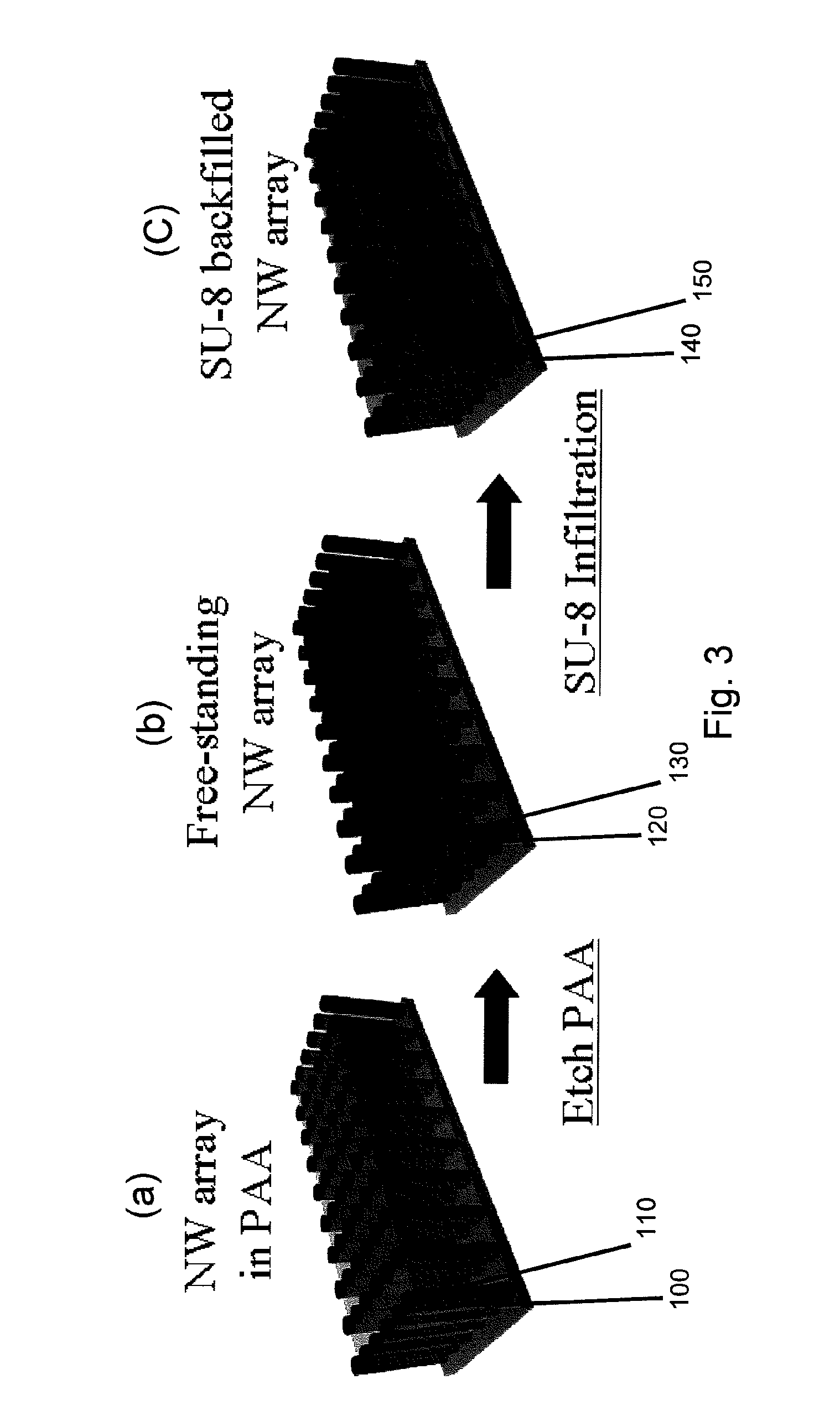Fabrication of nanowire array composites for thermoelectric power generators and microcoolers
a technology of nanowires and composites, applied in the manufacture/treatment of thermoelectric devices, coatings, transportation and packaging, etc., can solve the problems of significant loss of thermal energy, significant loss of electrical, fossil fuel, nuclear energy, etc., and achieve the effect of reducing the thermal conductivity of nanowires
- Summary
- Abstract
- Description
- Claims
- Application Information
AI Technical Summary
Benefits of technology
Problems solved by technology
Method used
Image
Examples
case 1 conditions
[0107]
Applied potential160 VCurrent density1.1 A / cm2Phosphoric acid0.4 MInitial temperature4° C.
The FESEM images shown in FIG. 18 corresponding to 10 sec growth duration indicated that the thickness of S1 was 6 μm and S2 was 2 μm. The pore ordering in the case of S1 was better than that of S2 as judged by inspection. FIGS. 18, 19 and 20 correspond to 10 sec, 30 sec and 60 sec growth durations, respectively.
case 2 conditions
[0108]
Applied potential160 VCurrent density1.1 A / cm2Phosphoric acid0.3 MInitial temperature4° C.
[0109]FESEM image of cross-sectional view of B-PAA in 0.3 M phosphoric acid for a growth duration of 7 min for conditions of Case 2 is shown in FIG. 21.
case 3 conditions
[0110]
Applied potential160 VCurrent density1.1 A / cm2Phosphoric acid0.4 MInitial temperature90° C.
[0111]The formation of B-PAA starts almost instantaneously when the initial temperature of the electrolytic bath is maintained at 90° C. The FESEM images in FIG. 22 present the cross-sectional and plan view of B-PAA where the anodization process was stopped after (a) 10 sec and (b) 30 sec. FIG. 22(a) indicates the formation of vertical pores of thickness of about 3 μm and Dp about 150 nm. The thickness of the vertical pores increases to 15 μm and Dp increases to about 200 nm after 30 sec (See FIG. 22(b)). In comparison to FIG. 19, B-PAA formation at 4° C. and growth duration 30 sec—the amount of Al2O3 dissolution is much higher in the case of B-PAA formation at 90° C. which is evident from the plan view in FIG. 422(b).
PUM
| Property | Measurement | Unit |
|---|---|---|
| Temperature | aaaaa | aaaaa |
| Temperature | aaaaa | aaaaa |
| Temperature | aaaaa | aaaaa |
Abstract
Description
Claims
Application Information
 Login to View More
Login to View More - R&D
- Intellectual Property
- Life Sciences
- Materials
- Tech Scout
- Unparalleled Data Quality
- Higher Quality Content
- 60% Fewer Hallucinations
Browse by: Latest US Patents, China's latest patents, Technical Efficacy Thesaurus, Application Domain, Technology Topic, Popular Technical Reports.
© 2025 PatSnap. All rights reserved.Legal|Privacy policy|Modern Slavery Act Transparency Statement|Sitemap|About US| Contact US: help@patsnap.com



